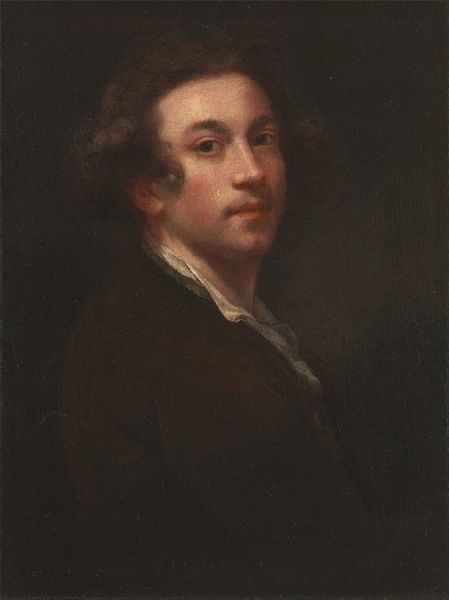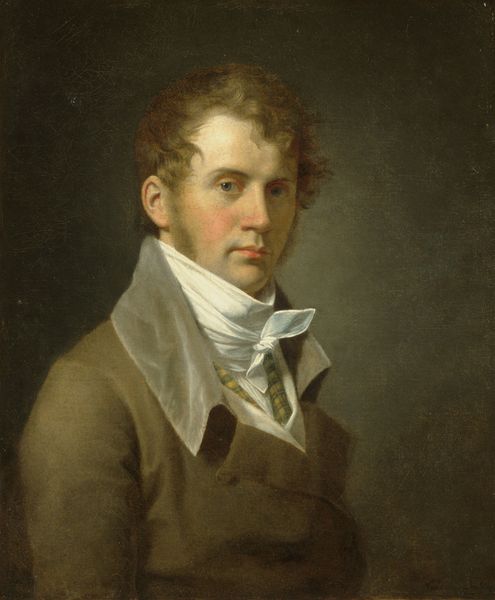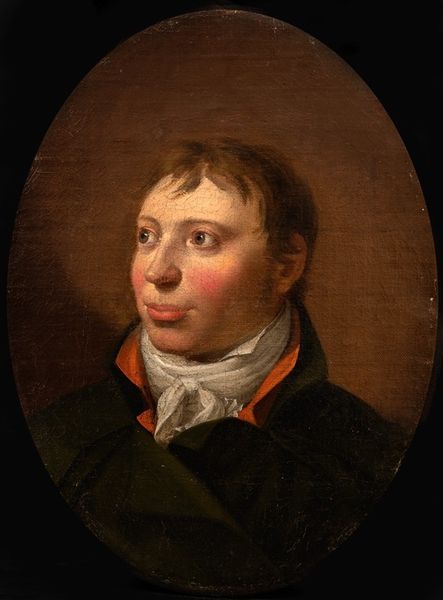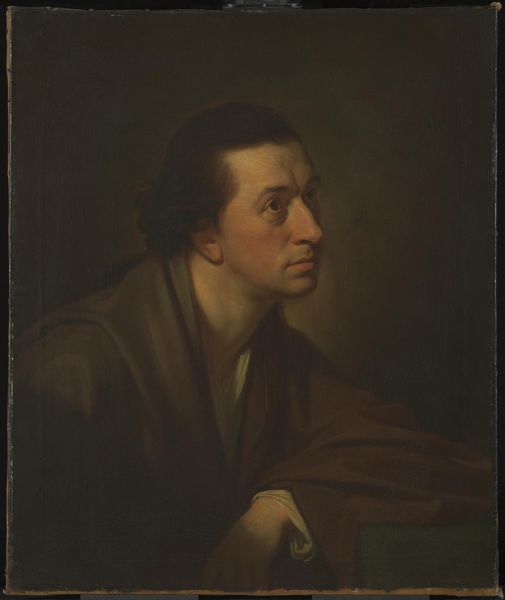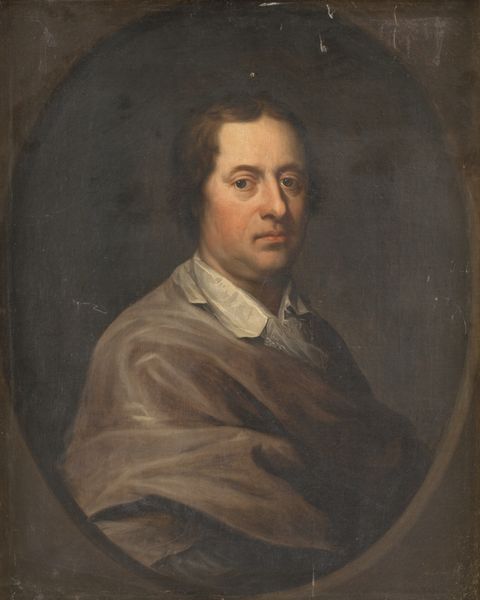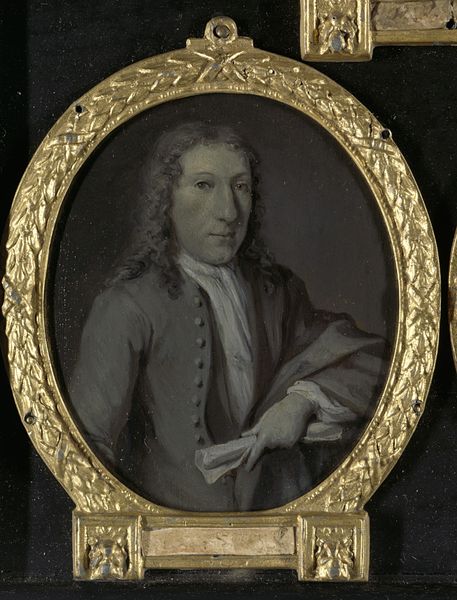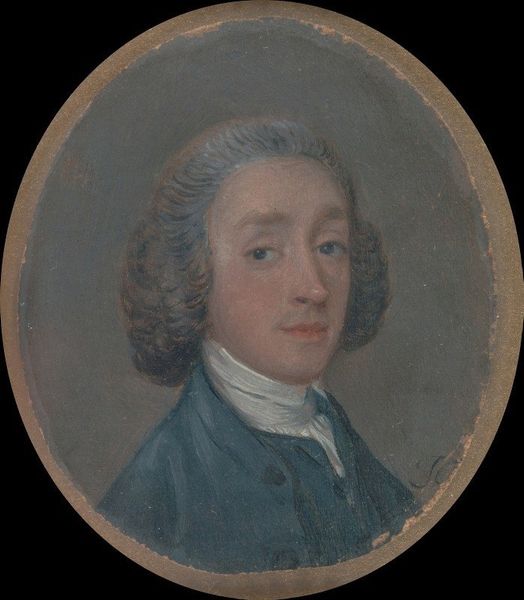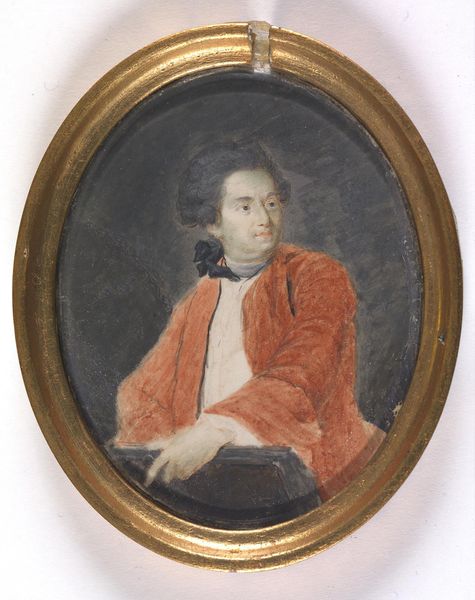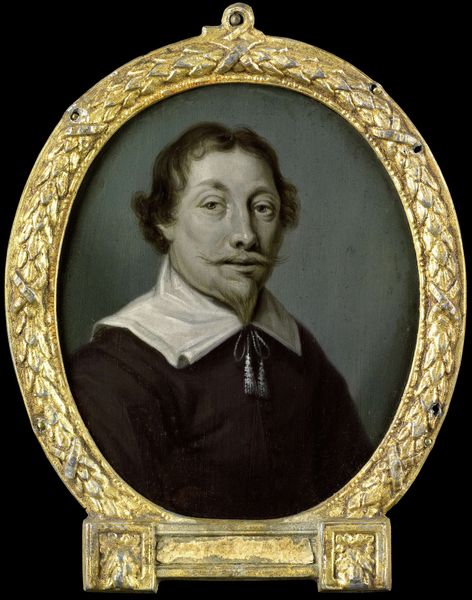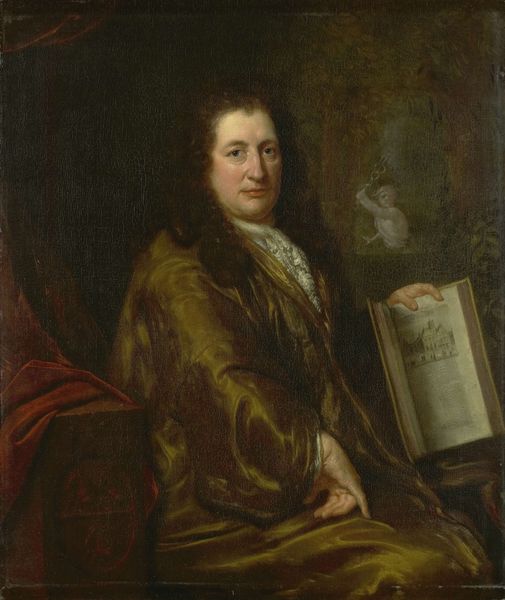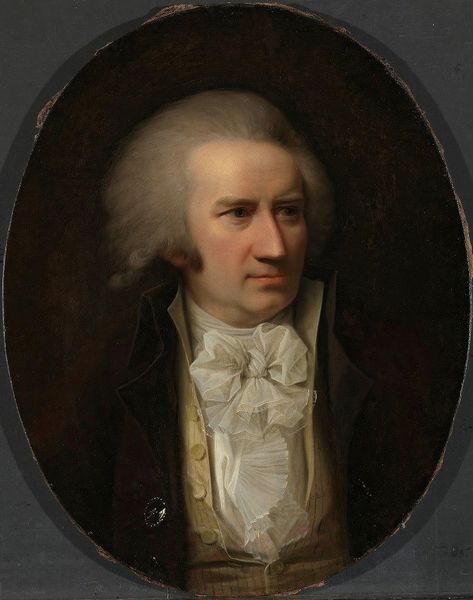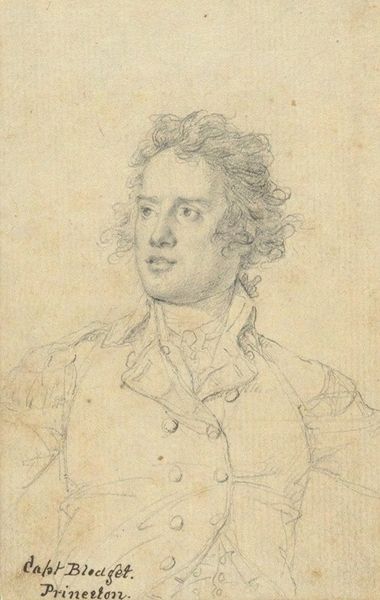
painting, oil-paint
#
portrait
#
figurative
#
neoclacissism
#
character portrait
#
painting
#
oil-paint
#
charcoal drawing
#
oil painting
Copyright: Public Domain: Artvee
Editor: So here we have Johann Baptist von Lampi the Elder's oil painting, "Josef Klieber," from around 1800. It’s a rather intimate portrait, almost like a snapshot of the artist and his sculpture. What's striking to me is the tangible presence of the clay or marble against the textures of the man’s clothing. What are your initial thoughts when you consider the materials employed here? Curator: I am most intrigued by what the portrait *doesn't* show us about the making. Think about the socioeconomic dynamics at play. This portrait is rendered in oil paint, a costly medium, on a canvas stretched and primed – all pointing to significant resources. What about the social context in which a sculptor could commission such a refined portrait? Klieber’s profession isn't presented as 'dirty' labor. He's shown alongside the refined result. What sort of artistic and social statement might this pose in Neoclassical Vienna? Editor: That’s a very insightful point. It really highlights the idealized view, concealing the grit and the sweat that must have been inherent to the process. I guess I hadn’t considered the painting itself as a commodity, signaling status. Curator: Precisely. Consider the implications of replicating marble’s cold perfection with layers of carefully applied oil paint. The illusion becomes a tangible status symbol. Also, notice how the sculptor's hand almost blends with the bust. Think of the labour division and the role of skill in a society moving toward mass production. Does it elevate craftsmanship, or perhaps mark it as a nostalgic commodity? Editor: It sounds like the materials themselves are tools for crafting an image, not just of Klieber, but also of artistry itself, reflecting social values and perhaps even anxieties. That reframes how I see the image completely. Thank you for pointing this out! Curator: Of course! Examining the material circumstances of production opens fascinating avenues of inquiry, doesn't it? I am now left thinking what could have happened to Klieber’s works… Where they collected, discarded, or immortalized?
Comments
No comments
Be the first to comment and join the conversation on the ultimate creative platform.
